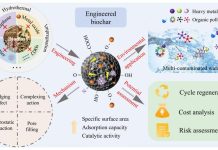Walter Heck, CTO at HeleCloud, looks ahead to the Green Post COVID Era and argues that sustainable IT paves the way for a green future
To go green or not to go green, that shouldn’t even be a question. When managed poorly, business technology contributes massively to our carbon footprint, leaving devastating and long-lasting effects on the environment. If IT is to lead us towards the future, we want, it cannot leave too deep a carbon footprint.
As the digital acceleration triggered by the recent events continues to pick up momentum, are business leaders focusing enough on making their IT more sustainable?
Sustainable IT is the backbone of a greener future
A recent report from the Capgemini Research Institute on Sustainable IT found that sustainable IT is still not a priority for most companies, with only 43% of executives stating that they are completely aware of their organisation’s IT footprint figures. Even though half of these companies have implemented a company sustainability strategy, only 18% have a comprehensive strategy with defined goals and target timeframes.
To make matters worse, 49% lack the tools to adopt and deploy solutions and 53% don’t have the expertise to monitor or maintain them. Subsequently, only 6% are reaping the performance opportunities of being highly mature in sustainable IT, including better Environmental, Social and Governance (ESG) scores, improved brand image and higher customer satisfaction. ESG refers to a set of standards for organisations that socially conscious investors use to screen their investments. Organisations are already experiencing the financial consequences of falling short on sustainability with some countries implementing carbon tax regulations. To stay ahead of the curve, all industries are now integrating ESG rules into their funding criteria. Employees, regulators, and investors are placing greater emphasis on ESG factors as these indicate a more resilient and sustainable business.
Sustainable IT will play a vital role in business recovery. To achieve it, leaders need an informed strategy, engaged employees and leadership, and sustainable software architecture. This will not only leave a greener footprint, but it will also unleash the potential of smart technologies to drive environmental innovations and improvements in sustainability performance.
Refurbished vs. remanufactured
When CTOs start looking to buy IT hardware sustainably, there are a number of options that can help them: buying remanufactured or refurbished. Remanufactured means to rebuild a product, which uses both recycled and new components to replace the older parts. Refurbishing is for products returned to the manufacturer to be rebuilt and quality checked before resale. According to a UK Crown Commercial Service study, buying remanufactured or refurbished products has many sustainability benefits, such as:
- Reduces carbon footprint in relation to the supply of equipment, compared to the purchasing of new products.
- Reduces toxins from sleeping into the environment through disposal of equipment.
- Lower electronic waste (estimated at 45 millions tonnes per year).
- Reduces the impact of labour and production, including waste, air pollutatns, and air pollutants.
- More cost-effective – a customer of ours had previosuly purchased refurbished hardware and made a saving of 76% when compared with buying new equipment.
This is a positive move away from the old linear product creation style of ‘take-make-dispose’, to a more sustainable ‘make-use-recycle’ route, making the most of our planet’s limiting resources.
The circular economy model
At its core, sustainable IT is based on the circular economy model. A circular economy model aims to keep waste to an absolute minimum and reuse resources for as long and as much as possible. This can prove to be complex for many public sector institutions, but with the help of the public cloud, sustainable IT is feasible for even those established public bodies running on legacy software.
Public cloud adoption is possibly the “greenest” way forward for these institutions, while also helping them to meet newer and stricter ESG standards. This is because it involves revamping their current business models to make them more sustainable and environmentally friendly. To do this, IT teams will need to seek the help of cloud experts to maximise the cloud’s full potential. In fact, recent 451 research shows that AWS’s infrastructure is 3.6 times more energy- efficient than the median of U.S. enterprise data centres surveyed. In doing so, this can make companies more financially sustainable too.
The regulatory and compliance environment is becoming increasingly focused on this type of circularity and international state leaders are beginning to feel the pressure to reduce their countries’ carbon footprint. Therefore, the taxation of raw materials and taxes on carbon emissions are beginning to skyrocket in order for Government sustainability departments to meet their national ESG standards.
Many companies are also facing pressure from consumers and investors. A recent Roland Berger survey shows that 60% of European customers between the age of 18-24 are willing to spend more on brands protecting the environment. On top of this, stakeholders and future investors are increasingly wary of reputational risk if they invest in companies with a poor environmental record and are withdrawing investments in non-sustainable businesses.
Sustainability and the minimised consumption of resources are the new social and economic imperatives. Materials can be extensively reused if the cycle is effectively managed, and incentives are aligned. Current developments in technology, regulation and consumer attitudes favour the move towards a circular economy. But to be truly effective, companies need to start the process early – in product design, sourcing and understanding consumer behaviour. There is growing support for increasing sustainability, as demonstrated by national implementation plans, the European Green Deal and the promotion of “green financing” – Now is the time for IT to lead the way and go green.











